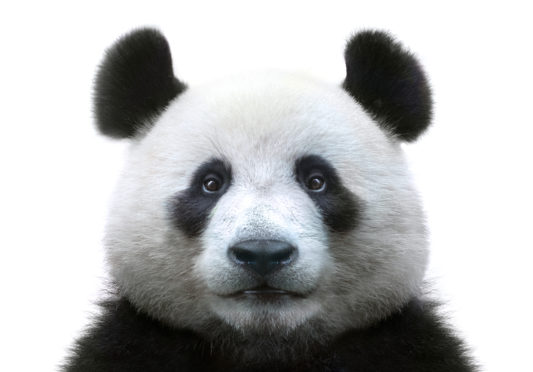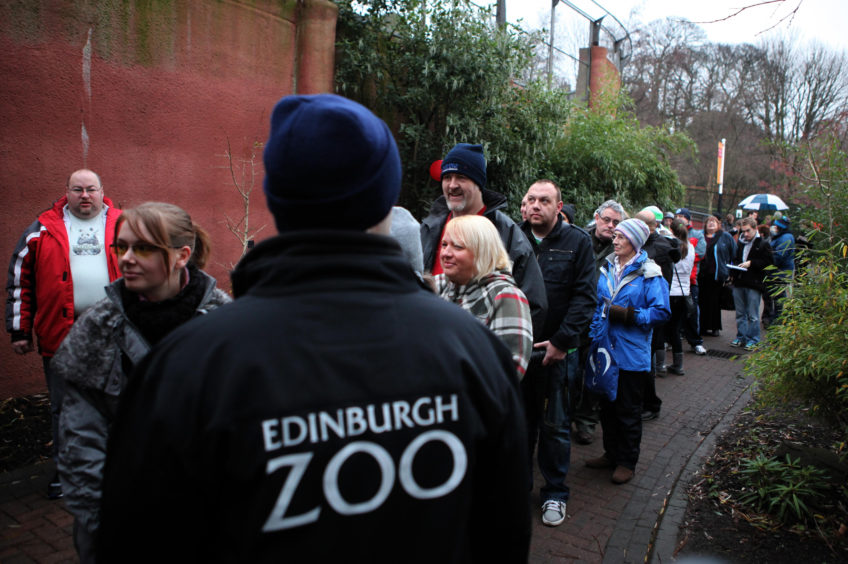
It was a multi-million-pound deal worthy of any football transfer window.
In 2011 two giant pandas arrived at Edinburgh Zoo after the Scottish Government sealed a 10-year deal with China.
The pandas attracted thousands of visitors to Edinburgh Zoo but the hoped-for patter of tiny paws and another surge in visitors never arrived.
Now, time is running out for Tian Tian and Yang Guang to breed, however, before they are returned to Asia where they are furry pieces on the chessboard of international diplomacy, according to author and panda expert Henry Nicholls.
He penned The Way Of The Panda, a book about the much-loved bears and how they’re used as pawns in China’s foreign policy.
“From the spring onwards Tian Tian will be fertile so there are possibly two more attempts at breeding before the pandas are returned to China,” said Nicholls. “So in April and May this year and April and May next year there will probably be three or four days where Tian Tian will be fertile. That’s it. It hasn’t been the success Edinburgh would have hoped, although it has still been a financial success for them.
“I think it was expected that, when the two pandas came, cubs would materialise so it’s understandable there’s sadness none have arrived so far. Although Yang Guang’s testicles being removed hasn’t helped.”
The male panda loaned to Edinburgh had both testicles removed in 2018 after zookeepers discovered tumours.
Artificial insemination techniques, using sperm from a panda at Berlin Zoo, have been tried, to no avail so far.
However, if it was successful the delight at welcoming a panda cub to Scotland’s capital might be tempered with the knowledge the cub would – much like a footballer asking for a transfer – trigger some clauses in the contract Edinburgh Zoo negotiated with lawyers in Beijing.
“If a cub arrives then another payment becomes due – usually around half a million dollars or so,” said Nicholls. “Although this would probably be offset by the number of visitors through the gate.
“If Tian Tian had a cub in 2021 that would be complex. I can’t think of a situation where that’s happened, although I would expect some sort of renegotiation with China.”
Edinburgh Zoo are obliged to return any cub to China within a set period of time – which in other countries hasn’t always gone down well.
“It’s all very clearly set out in the contract – China do this so often they actually issue standard contracts,” said Nicholls. “You get to keep the cub for two years.
“Giving it back is always a problem because understandably there is a massive spike in zoo gate receipts. But there’s always a mass outpouring of grief and sadness in the host country when the cub is returned to China. It seems a little brutal but that’s what’s in the contract.
“Some of the small print in these contracts is quite remarkable – there are penalties if your pandas die.
“If Tian Tian and Yang Guang died at Edinburgh Zoo then there would be a huge payment due, unless they could prove the panda died of natural causes such as old age.”
Panda deaths while being loaned out aren’t just embarrassing for the zoo, however. They can also spark diplomatic rows.
“In one incident a male panda loaned to Japan died while under anaesthetic, while zookeepers were collecting sperm,” added Nicholls.
“Japanese and Chinese relations have always been very raw, so this incident was viewed by Chinese commentators quite dimly.
“There was a big inquiry about it and a Chinese delegation arrived in Japan to investigate, but I think there was a deal struck behind closed doors – probably involving lots of money.
“If Edinburgh Zoo wanted to renegotiate their deal to keep the pandas then theoretically it would be between them and the Chinese Forestry commission.
“In reality however the Edinburgh pandas came as a result of the then-Deputy Prime Minister Nick Clegg’s trade negotiations with China.
“If a new deal was struck it would again come down to trade. I’m sure a supply of Scottish salmon would be part of that once more.”
Pandas may be mostly lethargic bears but they are in fact powerful tools in superpower China’s projection of power around the globe.
“This sort of panda diplomacy has been going on for decades,” said professor Steve Tsang, director of the SOAS China Institute and expert in Chinese foreign policy. “It began when China didn’t have much diplomatic power, unlike now.
“The diplomacy continues today because people love pandas – they seem soft and cuddly, even though the reality is they’re not.
“There is also a very clear understanding the ownership of the pandas and any descendants remain property of the Chinese government.
“So if a panda is conceived in Edinburgh Zoo this year it will not be Scottish – it will be of Chinese nationality, a subject of the Chinese Communist Party and a patriotic, panda-loving President Xi Jinping.”
According to Prof Tsang, the humble panda’s profile as a symbol of China has largely been a creation of the government.
“The panda wasn’t particularly important to Chinese culture – until the government made it so,” he explained. “It’s a modern creation.
“In Chinese studies we now talk of Panda Haters and Panda Huggers – people hostile or supportive of the Chinese Communist Party.
“The panda is a modern national symbol. You can create anything as a national symbol – look at Nessie in Scotland, for example.
“Although, forgive me for saying so, but at least we know pandas exist. The Chinese benefit hugely from how the outside world views pandas. Especially through something like the Kung Fu Panda movies.
“They’re a Hollywood creation, not Chinese, but they have done magic to promote pandas around the world.”
Whether Tian Tian will perform on the world stage and produce a panda cub before their scheduled return next year remains to be seen.
“Edinburgh Zoo will be looking enviously at Vienna,” said Nicholls. “The pandas loaned to the zoo there have bred every time the female is fertile, without the need for artificial insemination.
“They’re all natural matings. That’s quite unusual but obviously they’re doing something right in Vienna.
“Perhaps the pandas just like one another. Maybe Tian Tian and Yang Guang don’t.”

Enjoy the convenience of having The Sunday Post delivered as a digital ePaper straight to your smartphone, tablet or computer.
Subscribe for only £5.49 a month and enjoy all the benefits of the printed paper as a digital replica.
Subscribe